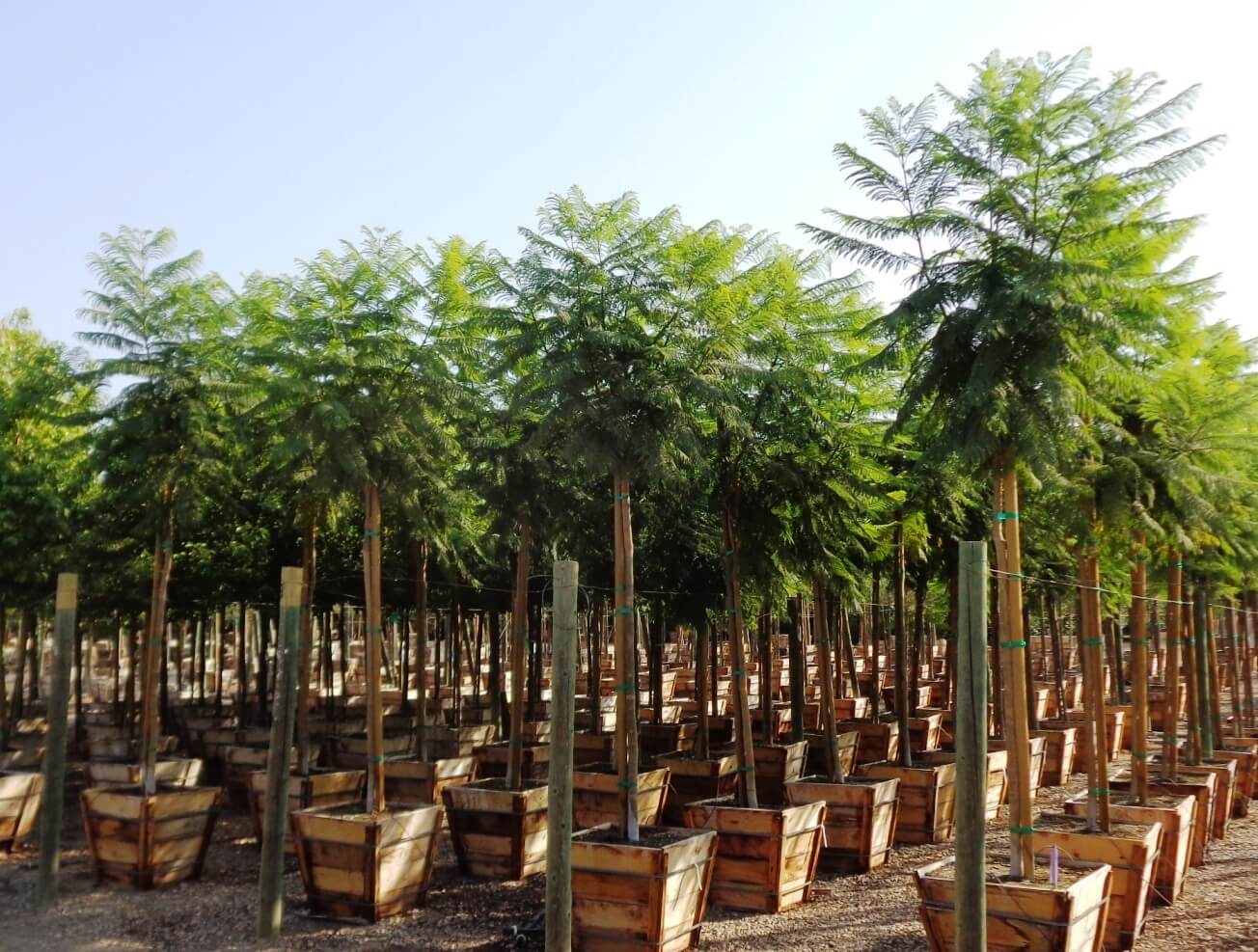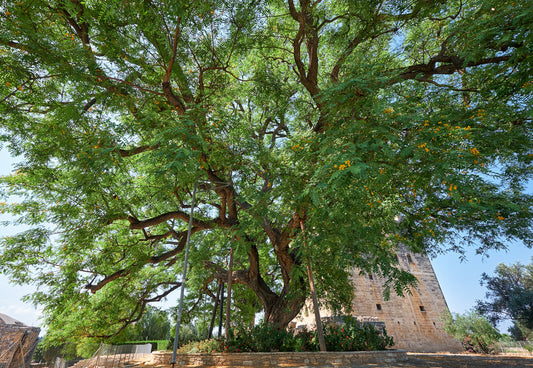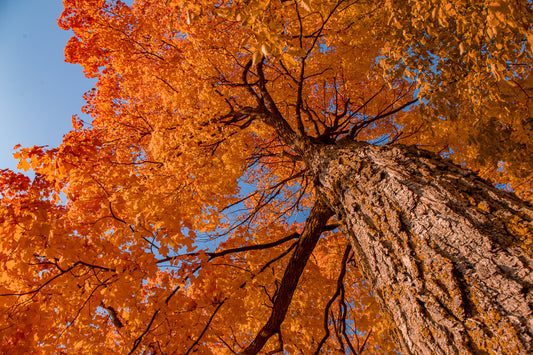Rosewood
Introduction
The term "rosewood" is commonly used to denote a broad range of timbers, which are distinguished by their rich hues and high-quality, with many of them also having a strong, sweet fragrance. However, this term does not apply to all trees indiscriminately. The true rosewoods belong to the Dalbergia genus, a collection of over 250 individual species found predominantly in tropical and subtropical regions around the world. But it's important to note that not all Dalbergia members yield what is known as rosewood, and conversely, not all woods labeled as "rosewood" in the commercial market belong to this genus, with some frequent “imposters” being ironwood (Acacia excelsa) and Australian rose mahogany.
This confusion arises primarily from the wood's coloration. Rosewood gets its name from the vibrant heartwood that these trees produce, typically boasting rich shades of brown or reddish-brown, often accentuated by darker veining. This distinctive color palette, evoking the warm hues of a rose, has led to the name "rosewood". This led to similar, unrelated species with similar hues to be called rosewoods, despite not being botanically closely related.
Among the broad diversity of rosewood trees, several species stand out for their exceptional qualities. African blackwood, cocobolo, kingwood, and Brazilian tulipwood are just a few examples that have garnered attention for their unique properties and applications. However, the most appreciated rosewood in the western world is Dalbergia nigra, or Brazilian rosewood
A stellar example of Brazilian rosewood's utilization is the iconic Eames Lounge Chair. A symbol of mid-century modern design, this chair is a testament to the delicate balance of comfort, function, and style. Crafted with a series of gently curved and polished rosewood veneers, the Eames Lounge Chair highlights the material's versatility and inherent resilience. The intricate joints and seams are subtly concealed, culminating in a flawless piece that showcases a keen eye for detail and an unrivaled command over craftsmanship.

Eames Lounge Chair
Conceived by Charles and Ray Eames, pioneers of modern design, the chair elevates the notion of furniture into a piece of enduring art. The rich, deep tones of the rosewood veneer meld seamlessly with the chair's bold, sculptural form, creating a captivating interplay of space and substance. As a multi-functional piece, the Eames Lounge Chair, with its matching ottoman, not only provides a comfortable seating option but also serves as a stylish centerpiece in any setting, attesting to its enduring popularity.
While the Eames Lounge Chair reflects a distinctive chapter of 20th-century design, it also ties into a broader narrative. Rosewood, a native of various regions from Southeast Asia to South America, has been treasured for centuries for its strength, longevity, and natural resistance to decay. Rosewood has been extensively used in diverse cultural contexts, from the intricate carvings in Chinese Imperial furniture to the resonant backs of Spanish guitars. This rich legacy of utilization speaks volumes about rosewood's unique appeal and value in different spheres of human creativity.

Eames Lounge Chair and Noguchi Table
At first sight, the towering, leafy silhouette of a rosewood tree exudes an air of majesty and mystery far removed from the quality furniture it can become. Its dense canopy, intricately textured bark, and alluring aromas bring life to forests, urban areas, and, most notably, the world of woodworking.
The Brazilian rosewood tree
In the vibrant tapestry of the Atlantic Forest biome in eastern Brazil, the Brazilian rosewood tree, or Dalbergia nigra, stands as a majestic emblem. Rising up to a stature of 15-20 meters, these giants possess a girth of nearly a meter and spread their massive branches in an umbrella-like formation, forming a lush canopy that nurtures a microcosm of life beneath it.
Their leaves are a work of nature's artistry, composed of multiple, oval-shaped leaflets arranged symmetrically along a central stalk. Spanning up to 15 cm in length, these pinnate leaves wear a rich, vibrant green, offering a striking contrast against the tree's dark-brown or black bark. When cut, the wood exudes a distinct, rose-like scent, owed to the presence of a chemical compound named linalool.
With the arrival of the rainy season, the Brazilian rosewood unveils another one of its many splendors - its blossoms. The tree adorns itself with clusters of delicate, yellow-white flowers that dangle from its branches like ornate jewels.
In terms of fruit, the Brazilian rosewood offers an intriguing spectacle. It yields elongated, somewhat curved legumes or pods that cradle multiple seeds within. As these pods reach maturity, they take advantage of their lightweight structure and the wind to disperse their seeds, ensuring the continuation of the next generation.

Brazilian Rosewood Trees
Growing slowly but steadily, the Brazilian rosewood can live for centuries, with some specimens potentially reaching over 1,000 years of age. Each passing year adds to the development of its dense, dark heartwood - the very core of its being. The heartwood's remarkable resonance properties, owing to its density and specific modulus of elasticity, make the timber a preferred choice for crafting musical instruments, particularly acoustic guitars and grand pianos.
Embedded within the heartwood are an abundance of phenolic compounds - chemical structures where a hydroxyl group is directly attached to an aromatic hydrocarbon group. These compounds offer the Brazilian rosewood an exceptional defense mechanism, granting resistance against pests, rot, and water - a survival tactic much needed in the tropical forests of Brazil. This attribute, coupled with its rich coloration, not only accentuates the tree's ecological value but also its role as a high-quality timber source.
Further helping it thrive in poor soils where competition for nutrients is very high is its ability for nitrogen fixation, a feature it shares with other members of the legume family. In a symbiotic relationship, the tree's root nodules house a type of bacteria known as rhizobia. These microscopic tenants perform an extraordinary transformation, converting atmospheric nitrogen - an element essential for life but inaccessible in its atmospheric form to most living organisms - into ammonia.
Nitrogen, which comprises about 78% of our atmosphere, is critical for life, serving as a building block for amino acids, proteins, and DNA. But despite its abundance, most plants cannot use nitrogen directly from the atmosphere. That's where the rhizobia come in, using their biological wizardry to render this elemental nitrogen into a form that the Brazilian rosewood tree can utilize, effectively making the tree self-fertilizing.
A fertilizer factory
This ingenious natural partnership doesn't just confer an advantage to the Brazilian rosewood, enabling it to flourish in nutrient-poor soils typical of many tropical forests. It also contributes significantly to the fertility of the soil itself. As the tree grows and drops its leaves, the degradation of this organic matter releases the captured nitrogen back into the soil, enriching it for other plants and organisms within the ecosystem. The net effect of this nitrogen fixation process is an enhancement of the entire forest's health and productivity, with the Brazilian rosewood essentially serving as a natural, self-sustaining fertilizer factory.
The benefits for the ecosystem as a whole do not stop here. With its immense height and generous canopy spread, it serves as a cornerstone in the forest structure. The expansive canopy provides shade, moderating the forest microclimate by reducing ground temperatures and retaining moisture. This modification of the environment allows for the growth of various understory plants that require such specific conditions to thrive and offers a variety of habitats for animals to thrive in, some of which are as unique and beautiful as the tree itself.
One such dweller is the vibrantly colored Hyacinth Macaw, the world's largest flying parrot species, known for its striking blue feathers and powerful beak. Not only do these magnificent birds nest in the tree's large cavities, but they also feed on its seeds, aiding in the dispersal of the tree's progeny across the forest floor. The tree also provides a home to numerous insect species, including the visually striking Blue Morpho butterfly, its iridescent wings lending a splash of color to the verdant backdrop.
Small mammals too find refuge in the Brazilian rosewood tree, with creatures such as the endearing three-toed sloth slowly making their way through the tree's branches. The sloth, a creature well adapted to life in the canopy, spends the majority of its life in the trees, feeding on leaves, tender shoots, and fruits. Another interesting denizen of the tree is the elusive Kinkajou, also known as the 'honey bear'. This nocturnal mammal, a member of the raccoon family, uses its prehensile tail to maneuver through the canopy in search of fruits. Each animal, in its unique way, contributes to the complex web of life centered around the Brazilian rosewood, demonstrating the intricate relationships that bind these diverse species together.
And last but not least, like most trees, the Brazilian rosewood offers several ecosystem services. It plays a role in the forest's water cycle. Through a process called transpiration, the tree helps maintain atmospheric humidity levels. It absorbs groundwater through its roots and releases water vapor from its leaves, contributing to rainfall formation. And like most trees, it ensures clean air, regulates the water cycle, and helps regulate the climate.
Overexploitation and trade
Its unique combination of characteristics, including its pest and rot resistance, enchanting aroma, beautiful appearance, and unrivaled resonance properties, makes it a highly coveted resource worldwide. However, these very qualities that make the Brazilian rosewood so desirable have also placed it in peril.
Overexploitation of this majestic tree has been driven by demand from industries like furniture making, construction, and musical instrument production. Its unique resonance properties make it the wood of choice for high-end acoustic guitars and pianos, and its robustness and beauty make it a preferred choice for fine furniture and other ornamental uses. Additionally, the distinctive scent of the Brazilian rosewood has also made it a target for the perfume industry. The result of this demand has been intense logging, much of it illegal, leading to a drastic reduction in the population of Brazilian rosewood trees.
In response to the alarming rate of exploitation, the International Union for Conservation of Nature (IUCN) classified the Brazilian rosewood as endangered. This means that it faces a very high risk of extinction in the wild if no immediate conservation actions are taken. The Convention on International Trade in Endangered Species of Wild Fauna and Flora (CITES) has also placed stringent trade restrictions on the species to curb its overexploitation, restrictions that now protect the entire genus. The use of Brazilian rosewood in the production of new musical instruments, for instance, is now heavily regulated. While these measures have provided some level of protection, ongoing efforts are necessary to ensure the survival of this invaluable species and the ecosystems it supports.
Conclusion
The narrative of the Brazilian rosewood encapsulates a paradox we often encounter - the very attributes that make a species valuable can also render it vulnerable. While the exploitation of this tree offers immediate gains, it also poses a risk to the ecosystem's longevity and resilience, potentially disrupting the intricate balance of life. It is imperative, then, to recognize that our quest for quality and luxury should not compromise the welfare of our planet.
Article by: Andrei Mihail, see more about the author here




